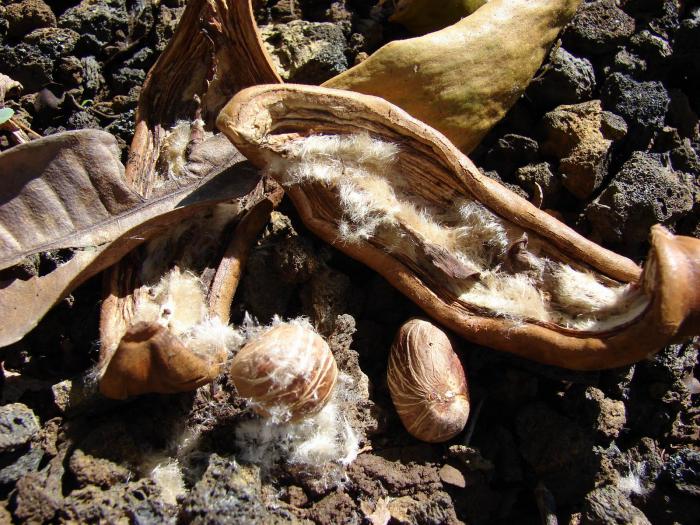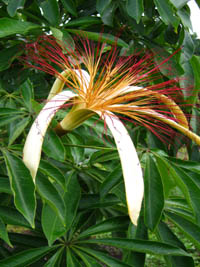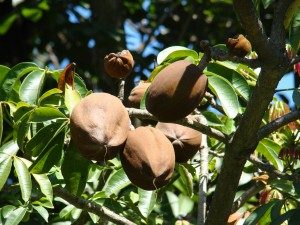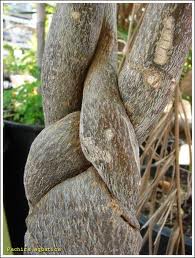My foraging existence is slightly schizophrenic. I grew up in a northern climate, and I write about many northern plants, or it is accurate to say that the majority of the plants I write about are found in northern climes. Conversely I live in Florida, which is a different land altogether. Thus I am biclimatic, having spent 42% of my life in the north and 58% in the south… thus far.
A 400-mile long state, Florida has three distinct climates, temperate, subtropical and tropical. I can go 200 miles north or south and find extremely different plant communities, species that will grow in one place but not the other. One reason why I expanded my classes into southern Florida was to learn more about the tropical there, and this tree is one of them, the Pachira aquatica, formerly Bombax glabrum and a few other scientific names as well. The nomenclature nonsense does not stop there with several common names for the Mallow Family member: Guiana Chestnut, Malabar Chestnut, Provision Tree, Saba Nut, Monguba, Pumpo, Money Tree and Money Plant.
Pachira aquatica (pack-EYE-rah ah-QUAT-tic-ah) is native to Central and South American and quite at home in southern Florida and Puerto Rico. It’s also cultivated in southern California and Hawaii. Growing close to 60 feet in the tropical wild, it’s cultivated for its edible seeds that grow in a large, woody pod. Out of the pod the seeds are shaped somewhat like chestnuts and taste similar when cooked, hence the common name. They also are covered with many white stripes, making them fairly easy to identify. The seeds’ flavor when raw is similar to peanuts. They can be eaten raw or cooked, or ground into flour. The cooked young leaves and flowers are also edible.
Calling the species the Money Tree or the Money plant is an innovation of the last 25 years or so. In 1986 a Taiwanese truck driver put five small seedlings into one pot and weaved them together as they grew. He inadvertently invented the next hot ornamental plant and business took off in Taiwan, Japan and most of eastern Asia. The braided tree is viewed as associated with profit and is a common plant found in businesses, often with red ribbons or other ornaments attached. By 2005 export of the braided tree was a $7 million business in Taiwan.
Why think the tree brings good financial luck? Numerology is still alive and well. The leaves are palmate, with five large leaves which symbolize the five basic Feng Shui elements; Metal, Wood, Water, Fire, Earth. And there are five trees braided together to re-enforce the number 5.
The genus name, Pachira is a Guyana term and aquatica means water. The tree likes to grow in swamps.
Green Deane’s Itemized Plant Profile
IDENTIFICATION: A spreading tree to 60 feet. Greenish bark and shiny, dark green compound leaves resembling a Schefflera. Flowers from a foot long bud, usually hidden by foliage. Five cream-colored petals of the large flowers droop revealing red-tipped off-white stamens. Those change to football-shaped woody pods that can reach a foot in length and half a foot in diameter. Tightly packed seeds in the pod enlarge until about a half inch in diameter causing the pod to crack open. Easily started from seed.
TIME OF YEAR: Flowers late fall or early winter, fruits in the spring
ENVIRONMENT: Does best in areas of periodic flood, or if water heavily often. It does not like dry wind, may endure temperatures briefly down to 28F.
METHOD OF PREPARATION: Seeds edible when the pod cracks open, raw or cooked or ground into flour. Seeds raw taste similar to peanuts. Roasted or fried they taste similar to chestnuts. Young leaves and flowers edible cooked, usually by boiling.






